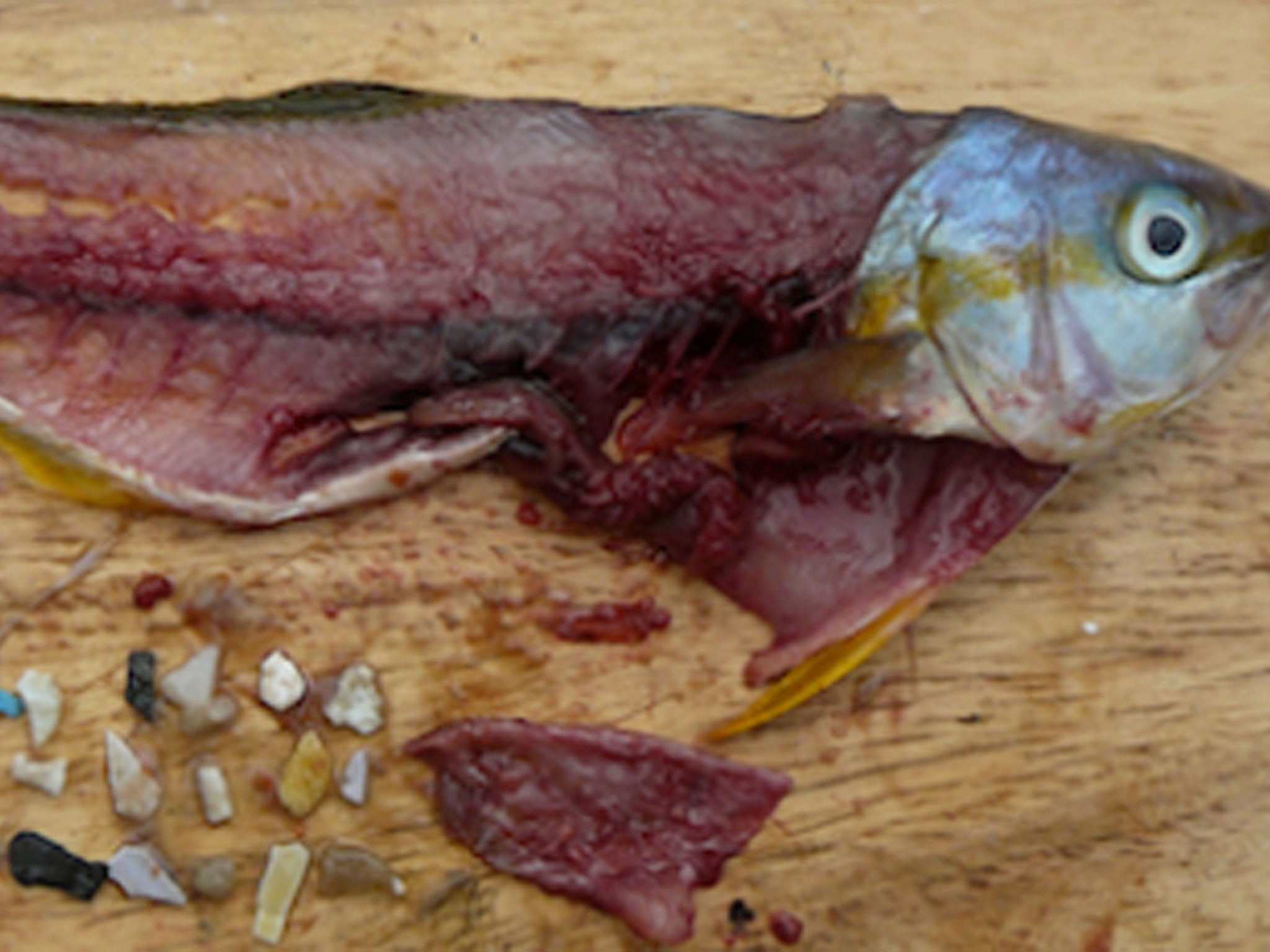Plastic should be considered toxic once it gets into the environment, MPs told
Microplastics – which accumulate chemicals that disrupt human hormones – are getting into seafood like North Sea mussels and Atlantic oysters

Plastic should be considered “toxic” if it gets into the natural environment because of its ability to attract poisonous chemicals “like a magnet”, according to an international campaign group.
In a submission to a parliamentary inquiry into the environmental impact of microplastics, the Plastic Oceans Foundation warned that tiny pieces of plastic laden with chemicals were finding their way through the gut into the flesh of seafood and, from there, into the human food chain.
Microplastic comes from a range of sources, such as microbeads deliberately added to soap as an exfoliant and the 1,900 tiny fibres that can be produced each time a single piece of synthetic clothing is washed. Larger pieces of plastic also break down over time into microscopic pieces.
The House of Commons’ Environmental Audit Committee is due to hold the first hearing of its inquiry into the effects of microplastics on Monday, 9 May.
In its written submission to the committee, the Plastic Oceans Foundation said: “Evidence clearly shows that plastics contain or are formulated with chemicals that are known to be toxic, such as phthalates, and bisphenol A, and which cause a broad range of effects including critical diseases and health conditions.
“Plastic also attracts chemicals ‘like a magnet’ the moment it enters the ocean, as well as causing physical harm to marine life.”
The chemicals accumulate in “body tissue, particularly fat and muscle tissue, and biomagnifies in the marine food chain” and then enters human food supply, the campaign group added. This can affect the human endocrine system, which produces hormones involved in growth, the metabolism, sexual development and function.
“These toxic substances... through a variety of toxicological mechanisms including endocrine disruption can accumulate into the human food chain through consumption of fish and cause health effects in the human population,” it said.
“Plastics should therefore be considered to be toxic when released to the environment.”
The charity plans to highlight the problem in a documentary film called A Plastic Ocean, which is due to be released later this year, featuring scientists and commentators including Sir David Attenborough.
In its submission to the committee, the Department for Environment, Food and Rural Affairs (Defra) noted an international scientific review of research into the health effects of microplastics had found “a large degree of uncertainty surrounding this issue”.
However it added: “Several studies show that microplastics are present in sea food sold for human consumption, including mussels in North Sea mussel farms and oysters from the Atlantic.
“The presence of marine microplastics in seafood could pose a threat to food safety. However, due to the complexity of estimating microplastic toxicity, estimations of the potential risks for human health posed by microplastics in foodstuffs is not yet possible.”
Defra said no scientist had studied whether microplastics eaten by humans could get into the tissues of the body.
“Although the gut may be an important barrier, there is a possibility that very small particles such as nanoplastics could penetrate gut tissues.
“Experiments in rats have showed that polystyrene microspheres of 50-100nm (1nm = 1 millionth of a mm) can be absorbed into the body through the gut and transported to the liver and spleen.”

But it concluded that even for people who eat a lot of seafood “dietary exposure to microplastic particles is likely to be relatively low compared with inhalation of microplastics”.
The British Plastics Federation and PlasticsEurope wrote that "many" cosmetic firms had voluntarily agreed to remove microbeads from their products.
But their focus was on the need to teach people to "act responsibly with their waste" and suggested there should be more "community-led litter picks".
"The public need to be aware of the consequences of littering and inappropriate disposal of waste," they said.
"Education needs to take place within schools particularly ensuring secondary school children continue in the good habits children learn at primary school. However, education of the wider public is also needed as a report from Keep Britain Tidy found 62 per cent of people in England drop litter (28 per cent admit to it) meaning the problem extends beyond young people."
They also called for "adequate litter bins particularly on beaches".
"Once bins are full the public will put bags of waste next to bins often thinking this is the right things to do," the two plastic industry bodies wrote.
"These bags may be blown or broken open by wildlife scavenging for food and it is important this waste is removed as part of the bin emptying process."
Join our commenting forum
Join thought-provoking conversations, follow other Independent readers and see their replies
Comments